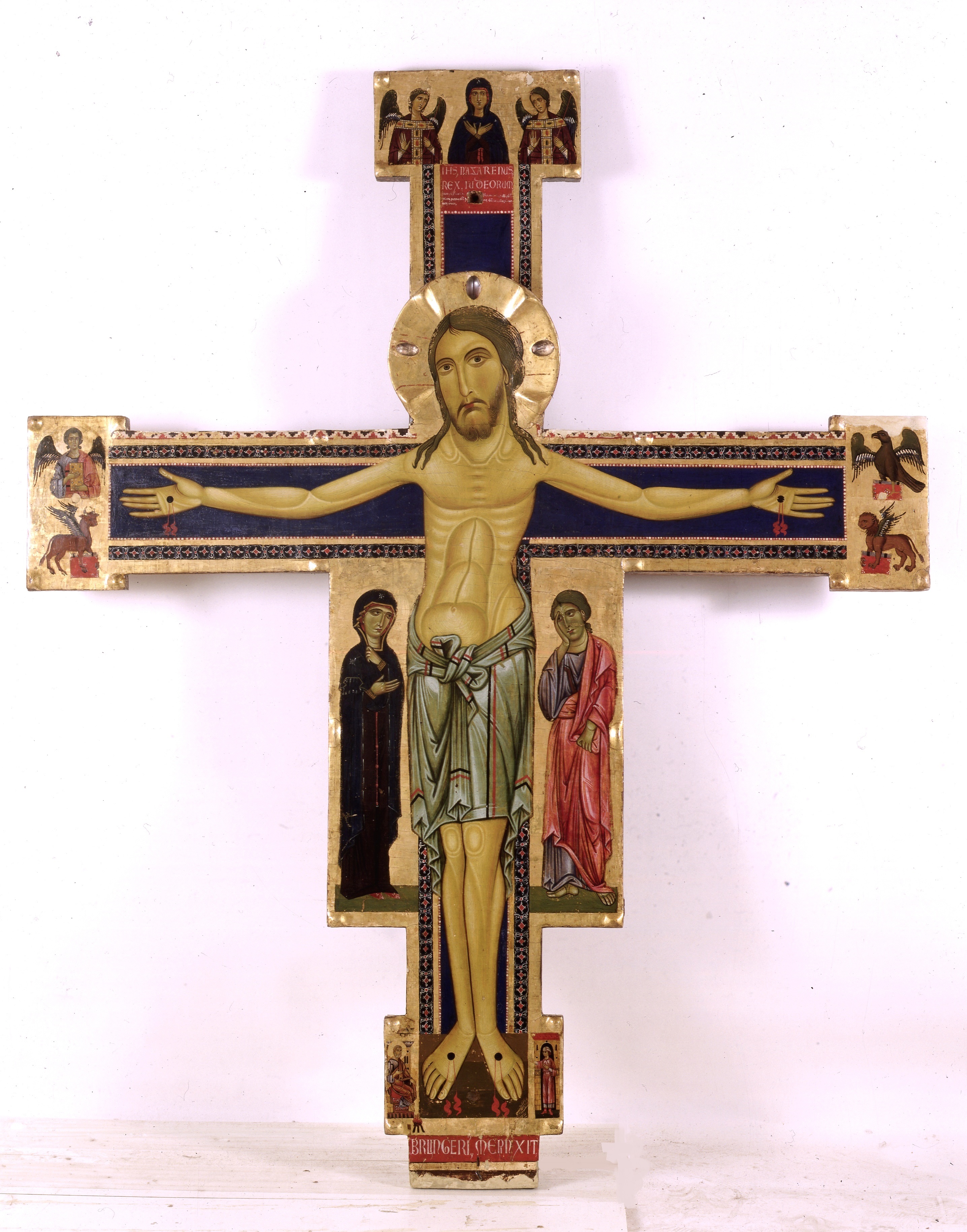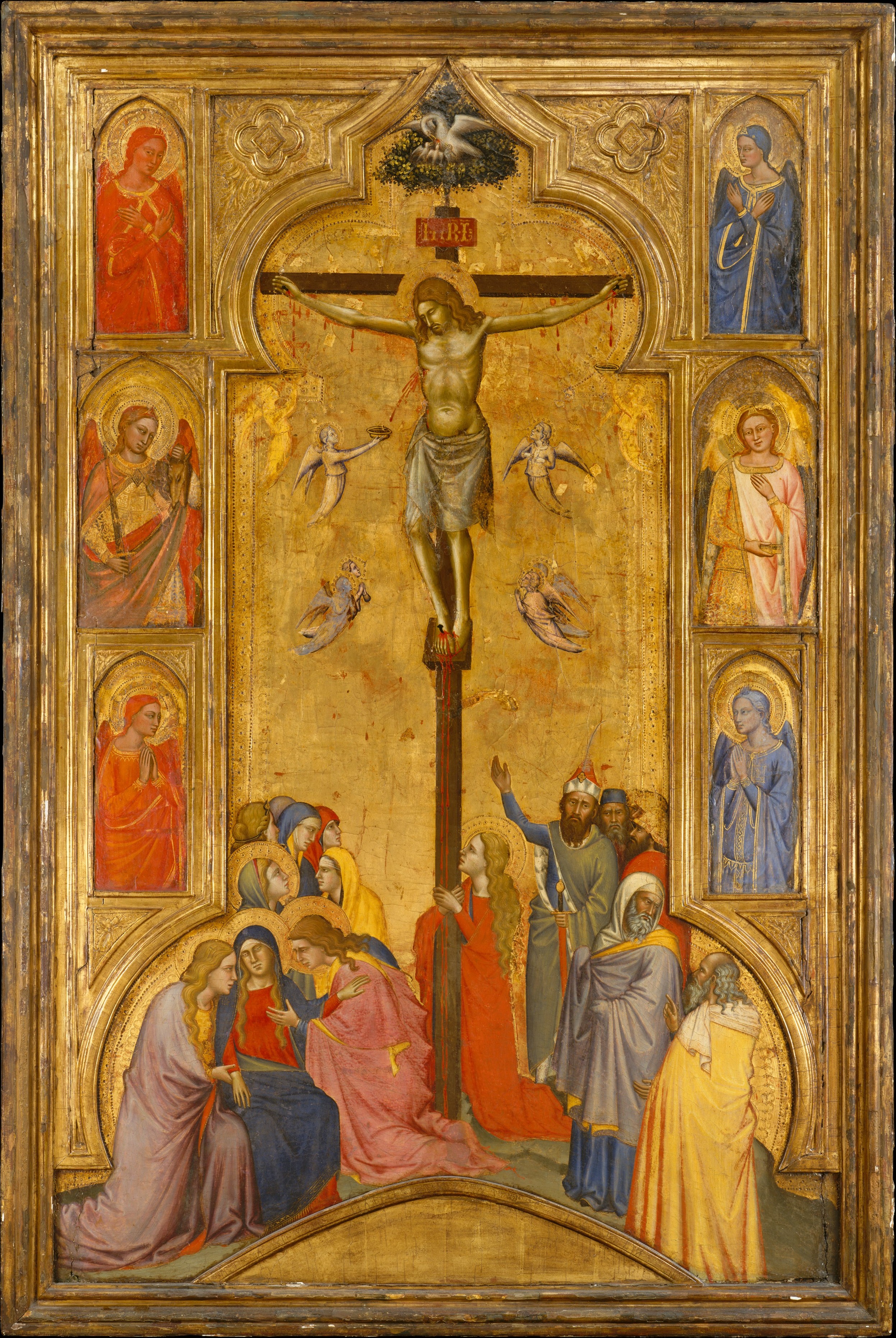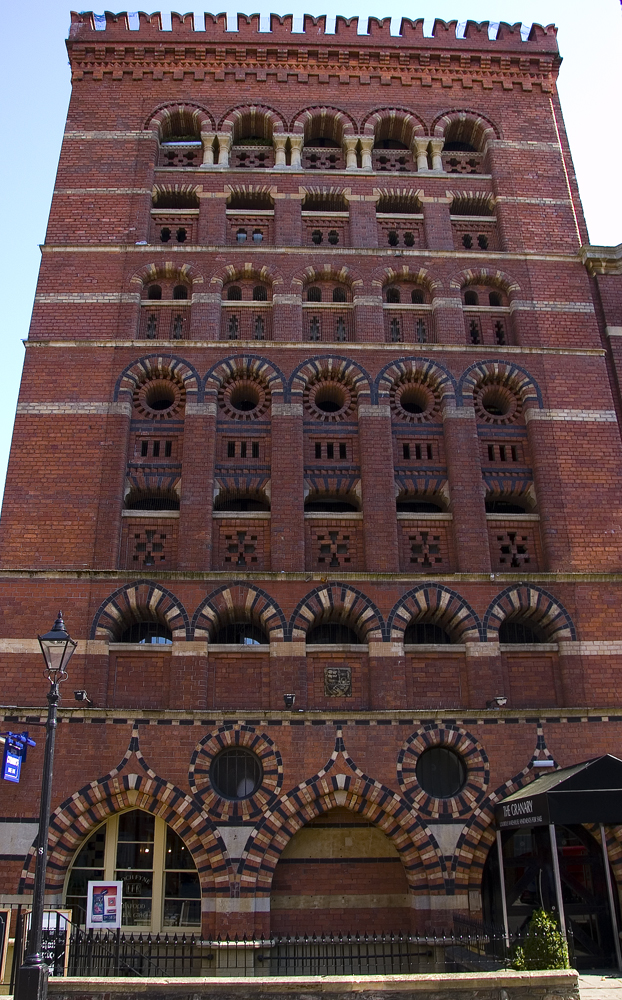|
Italo-Byzantine
Italo-Byzantine is a style term in art history, mostly used for medieval paintings produced in Italy under heavy influence from Byzantine art. It initially covers religious paintings copying or imitating the standard Byzantine icon types, but painted by artists without a training in Byzantine techniques. These are versions of Byzantine icons, most of the Madonna and Child, but also of other subjects; essentially they introduced the relatively small portable painting with a frame to Western Europe. Very often they are on a gold ground. It was the dominant style in Italian painting until the end of the 13th century, when Cimabue and Giotto began to take Italian, or at least Florentine, painting into new territory. But the style continued until the 15th century and beyond in some areas and contexts. ''Maniera greca'' ("Greek style/manner") was the Italian term used at the time, and by Vasari and others; it is one of the first post-classical European terms for style in art. Vas ... [...More Info...] [...Related Items...] OR: [Wikipedia] [Google] [Baidu] |
Berlinghiero Berlinghieri 005
Berlinghiero also known as Berlinghiero Berlinghieri or Berlinghiero of Lucca (floruit, fl. 1228 – between 1236 and 1242), was an Italian painter in the Italo-Byzantine style of the early thirteenth century. He was the father of the painters Barone Berlinghieri, Bonaventura Berlinghieri, and Marco Berlinghieri. His actual name is unknown, as he is known from the inscription "Berlingerius me pinxit" on the crucifix which is the basis of attributing other works to the name. The form "Berlinghiero Berlinghieri", once common in art history, is certainly not his name according to Edward B. Garrison and most recent sources and he should be called Berlinghiero. He is also mentioned in a parchment of March 22, 1228 among the names of the residents of Lucca who swore to keep the peace with Pisa after a five-year war. The original document has been lost since the mid-19th century and only a somewhat garbled 17th-century transcription exists today, giving rise to the mistaken interpret ... [...More Info...] [...Related Items...] OR: [Wikipedia] [Google] [Baidu] |
Cimabue
Cimabue (; ; – 1302), Translated with an introduction and notes by J.C. and P Bondanella. Oxford: Oxford University Press (Oxford World’s Classics), 1991, pp. 7–14. . also known as Cenni di Pepo or Cenni di Pepi, was an Italian painter and designer of mosaics from Florence. Although heavily influenced by Byzantine models, Cimabue is generally regarded as one of the first great Italian painters to break from the Italo-Byzantine style. While medieval art then was scenes and forms that appeared relatively flat and highly stylized, Cimabue's figures were depicted with more advanced lifelike proportions and shading than other artists of his time. According to Italian painter and historian Giorgio Vasari, Cimabue was the teacher of Giotto, the first great artist of the Italian Proto-Renaissance. However, many scholars today tend to discount Vasari's claim by citing earlier sources that suggest otherwise. Life Little is known about Cimabue's early life. One source that recou ... [...More Info...] [...Related Items...] OR: [Wikipedia] [Google] [Baidu] |
Fondaco Dei Turchi
The Fondaco dei Turchi (Venetian: ''Fontego dei Turchi'', tr, Türk Hanı) is a Veneto-Gothic style palazzo, later on named as the Turks' Inn, on the Grand Canal of Venice, northeast Italy. It was described by Augustus Hare in the 19th century as "a Byzantine palace of the 9th century, and one of the earliest buildings, not ecclesiastical, in Venice. .... A few years ago it was one of the most unique and curious buildings in Europe, and the most important specimen of Italo-Byzantine architecture, but it was modernised and almost rebuilt by the ... government in 1869".''Venice'', 1884, p. 76 , Smith Elder, Londongoogle books/ref> Early history The palace was constructed in the first half of the 13th century by Giacomo Palmier, an exile from Pesaro. The Venetian Republic purchased it in 1381 for Niccolò II d'Este, the Marquess of Ferrara. During its early history, the palazzo also served as a residence to many visiting dignitaries. Turkish quarters From the early 17th centu ... [...More Info...] [...Related Items...] OR: [Wikipedia] [Google] [Baidu] |
Berlinghiero
Berlinghiero also known as Berlinghiero Berlinghieri or Berlinghiero of Lucca ( fl. 1228 – between 1236 and 1242), was an Italian painter in the Italo-Byzantine style of the early thirteenth century. He was the father of the painters Barone Berlinghieri, Bonaventura Berlinghieri, and Marco Berlinghieri. His actual name is unknown, as he is known from the inscription "Berlingerius me pinxit" on the crucifix which is the basis of attributing other works to the name. The form "Berlinghiero Berlinghieri", once common in art history, is certainly not his name according to Edward B. Garrison and most recent sources and he should be called Berlinghiero. He is also mentioned in a parchment of March 22, 1228 among the names of the residents of Lucca who swore to keep the peace with Pisa after a five-year war. The original document has been lost since the mid-19th century and only a somewhat garbled 17th-century transcription exists today, giving rise to the mistaken interpretatio ... [...More Info...] [...Related Items...] OR: [Wikipedia] [Google] [Baidu] |
Icon
An icon () is a religious work of art, most commonly a painting, in the cultures of the Eastern Orthodox, Oriental Orthodox, and Catholic churches. They are not simply artworks; "an icon is a sacred image used in religious devotion". The most common subjects include Christ, Mary, saints and angels. Although especially associated with portrait-style images concentrating on one or two main figures, the term also covers most religious images in a variety of artistic media produced by Eastern Christianity, including narrative scenes, usually from the Bible or the lives of saints. Icons are most commonly painted on wood panels with egg tempera, but they may also be cast in metal, carved in stone, embroidered on cloth, done in mosaic or fresco work, printed on paper or metal, etc. Comparable images from Western Christianity can be classified as "icons", although "iconic" may also be used to describe a static style of devotional image. In the Greek language, the term for icon paintin ... [...More Info...] [...Related Items...] OR: [Wikipedia] [Google] [Baidu] |
Gold Ground
Gold ground (both a noun and adjective) or gold-ground (adjective) is a term in art history for a style of images with all or most of the background in a solid gold colour. Historically, real gold leaf has normally been used, giving a luxurious appearance. The style has been used in several periods and places, but is especially associated with Byzantine and medieval art in mosaic, illuminated manuscripts and panel paintings, where it was for many centuries the dominant style for some types of images, such as icons. For three-dimensional objects, the term is gilded or gold-plated. Gold in mosaic began in Roman mosaics around the 1st century AD, and originally was used for details and had no particular religious connotation, but in Early Christian art it came to be regarded as very suitable for representing Christian religious figures, highlighting them against a plain but glistering background that might be read as representing heaven, or a less specific spiritual plane. Full- ... [...More Info...] [...Related Items...] OR: [Wikipedia] [Google] [Baidu] |
Madonna And Child
In art, a Madonna () is a representation of Mary, either alone or with her child Jesus. These images are central icons for both the Catholic and Orthodox churches. The word is (archaic). The Madonna and Child type is very prevalent in Christian iconography, divided into many traditional subtypes especially in Eastern Orthodox iconography, often known after the location of a notable icon of the type, such as the ''Theotokos of Vladimir'', ''Agiosoritissa'', ''Blachernitissa'', etc., or descriptive of the depicted posture, as in ''Hodegetria'', ''Eleusa'', etc. The term ''Madonna'' in the sense of "picture or statue of the Virgin Mary" enters English usage in the 17th century, primarily in reference to works of the Italian Renaissance. In an Eastern Orthodox context, such images are typically known as '' Theotokos''. "Madonna" may be generally used of representations of Mary, with or without the infant Jesus, is the focus and central figure of the image, possibly flanke ... [...More Info...] [...Related Items...] OR: [Wikipedia] [Google] [Baidu] |
Venetian Gothic Architecture
Venetian Gothic is the particular form of Italian Gothic architecture typical of Venice, originating in local building requirements, with some influence from Byzantine architecture, and some from Islamic architecture, reflecting Venice's trading network. Very unusually for medieval architecture, the style is both at its most characteristic in secular buildings, and the great majority of survivals are secular. The best-known examples are the Doge's Palace, Venice, Doge's Palace and the Ca' d'Oro. Both feature loggias of closely spaced small columns, with heavy tracery with quatrefoil openings above, decoration along the roofline, and some coloured patterning to plain wall surfaces. Together with the ogee arch, capped with a relief ornament, and ropework reliefs, these are the most iconic characteristics of the style. Ecclesiastical Gothic architecture tended to be less distinctively Venetian, and closer to that in the rest of Italy. The beginning of the style probably goes ba ... [...More Info...] [...Related Items...] OR: [Wikipedia] [Google] [Baidu] |
Coppo Di Marcovaldo
Coppo di Marcovaldo (c. 1225 – c. 1276) was a Florentine painter in the Italo-Byzantine style, active in the middle of the thirteenth century, whose fusion of both the Italian and Byzantine art, Byzantine styles had great influence on generations of Italian artists. Biography Coppo di Marcovaldo is one of the better-known Duecento artists and is the first Florence, Florentine artist whose name and works are well documented. One of the earliest references to Coppo is found in the Book of Montaperti where his name is listed amongst Florentines soldiers for the war with Siena, which ended at the Battle of Montaperti on September 4, 1260. It is speculated by many historians that Coppo was taken prisoner by the Sienese where he was then held at the church of Santa Maria dei Servi (Siena), Santa Maria dei Servi. It was here in 1261 that he painted his most famous work The ''Madonna del Bordone'' for the order of the Servites. Assumed to be a prisoner of war, the question is r ... [...More Info...] [...Related Items...] OR: [Wikipedia] [Google] [Baidu] |
Byzantium
Byzantium () or Byzantion ( grc, Βυζάντιον) was an ancient Greek city in classical antiquity that became known as Constantinople in late antiquity and Istanbul today. The Greek name ''Byzantion'' and its Latinization ''Byzantium'' continued to be used as a name of Constantinople sporadically and to varying degrees during the thousand year existence of the Byzantine Empire. Byzantium was colonized by Greeks from Megara in the 7th century BC and remained primarily Greek-speaking until its conquest by the Ottoman Empire in AD 1453. Etymology The etymology of ''Byzantium'' is unknown. It has been suggested that the name is of Thracian origin. It may be derived from the Thracian personal name Byzas which means "he-goat". Ancient Greek legend refers to the Greek king Byzas, the leader of the Megarian colonists and founder of the city. The name ''Lygos'' for the city, which likely corresponds to an earlier Thracian settlement, is mentioned by Pliny the Elder in his '' Natu ... [...More Info...] [...Related Items...] OR: [Wikipedia] [Google] [Baidu] |
Bristol Byzantine
Bristol Byzantine is a variety of Byzantine Revival architecture that was popular in the city of Bristol from about 1850 to 1880. Many buildings in the style have been destroyed or demolished, but notable surviving examples include the Colston Hall, the Granary on Welsh Back, the Carriage Works on Stokes Croft and several of the buildings around Victoria Street. Several of the warehouses around the harbour have survived including the Arnolfini, which now houses an art gallery. Clarks Wood Company warehouse and the St Vincent's Works in Silverthorne Lane and the Wool Hall in St Thomas Street are other survivors from the 19th century. Style Bristol Byzantine has influences from Byzantine and Moorish architecture applied mainly to industrial buildings such as warehouses and factories. The style is characterised by a robust and simple outline, materials with character and coloured polychrome brickwork including red, yellow, black and white brick primarily from the Cattybrook Br ... [...More Info...] [...Related Items...] OR: [Wikipedia] [Google] [Baidu] |
Maestro Di San Gaggio (forse Grifo Di Tancredi), Trittico, 1275-85 Ca
Maestro (; from the Italian ''maestro'' , meaning "master" or "teacher") is an honorific title of respect (plural: maestros or maestri). The term is most commonly used in the context of Western classical music and opera, in line with the ubiquitous use of Italian musical terms. In music The word ''maestro'' is most often used in addressing or referring to conductors. Less frequently, one might refer to respected composers, performers, impresarios, musicologists, and music teachers. In the world of Italian opera, the title is also used to designate a number of positions within the orchestra and company that have specific duties during rehearsal and performance. These include: * Maestro sostituto or maestro collaboratore: musicians who act as ''répétiteurs'' and assistant conductors during performances. * Maestro concertatore, the keyboard continuo player, who prepares singers and leads rehearsals. * Maestro direttore: the leader of the first violins of the orchestra (see co ... [...More Info...] [...Related Items...] OR: [Wikipedia] [Google] [Baidu] |






_Doge's_Palace_facing_the_sea.jpg)


